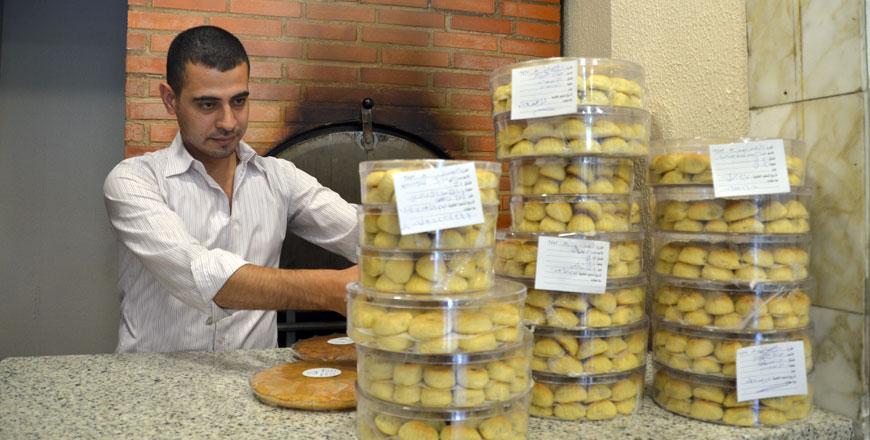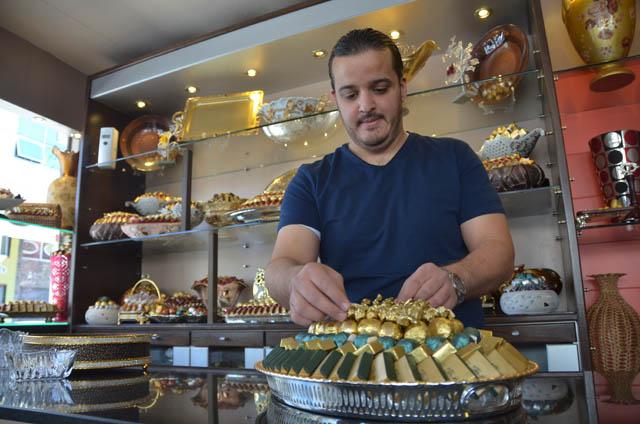You are here
‘Jordanians expected to spend JD1.2m on sweets to celebrate Tawjihi results’
By Omar Obeidat - Jul 22,2014 - Last updated at Jul 22,2014

AMMAN – Jordanians usually buy over 200,000 kilogrammes of sweets, mainly knafah, during the five hours that follow the announcement of Tawjihi results, a sector leader said Tuesday.
Raed Hamada, president of the Jordan Association for Restaurant and Sweets Shops Owners, said the day the results of the General Secondary Certificate Examination (Tawjihi) are announced, is the “biggest day” for sweets shops across the Kingdom in terms of sales.
Over JD1.2 million worth of sweets are expected to be sold in the few hours following the announcement of this year’s Tawjihi summer session, Hamada told The Jordan Times over the phone.
Hamada, who is also a board member of the Jordan Chamber of Commerce representing the foodstuff sector, called on the Ministry of Education to specify the date for releasing the results to enable shops to prepare for the “big occasion” and avoid confusion.
According to official figures, the number of students who sat for Tawjihi examinations this summer is around 127,000.
Hamada said the demand for sweets, particularly chocolates and cookies, is set to surge sharply in the days ahead of Eid Al Fitr, expecting consumers to spend around JD2 million on sweets for Eid.
Eid Al Fitr, the Muslim feast marking the end of Ramadan, is expected next Monday or Tuesday with the start of Shawwal, the 10th month of the Islamic lunar calendar.
“Sweets shops usually see huge demand for their products during the last week of Ramadan,” Hamada said, adding that qatayef is the most popular dessert in the fasting month.
Hamada estimated the consumption of sweets for the entire fasting month to be between JD8 million and JD10 million.
The number of restaurants, sweets shops and cafés in the Kingdom is nearly 15,000, around 1,200 of which are sweets stores, according to figures he presented.
Restaurants and Ramadan
Hamada said Ramadan is a good month for business for the majority of restaurants, as over the past five years, the fasting month has been observed in the summer season, when schools are off, expatriates return home and the Kingdom receives large numbers of tourists.
When Ramadan falls in autumn and winter, the demand for dining out falls sharply, he said, indicating that in recent years regular dining in restaurants in Ramadan has become part of the lifestyle of many Jordanians.
The demand for fast food has also surged in the fasting month, Hamada added, as people order meals for iftar and sohour.
“Traditional Jordanian meals such as falafel, shawerma and pastries are preferred by many for sohour as well as other Western meals such as burgers and pizza,” he noted.
Related Articles
AMMAN — Jordanians and guests are expected to spend up to JD4 million on sweets during Eid Al Fitr holiday, including some JD1.7 million on
With the approach of the Eid Al Fitr holiday, consumers' demand for sweets, especially mamoul and chocolate, has increased significantly.
The announcement of General Secondary Certificate Examination (Tawjihi) results without prior warning caused confusion in the sweets market on Sunday, according to the president of the Jordan Association for Restaurant and Sweets Shops Owners.














